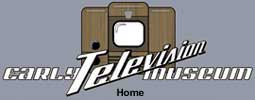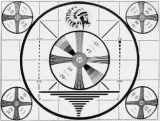xxxxxxxxxxxxxxxxxxxxxxx xxxxxxxxxxxxxxxxxxxxxxxxxxxxxx xxxxxxxxxxxxxxxxxxxxxxxx xxxxxxxxxxxxxxxxxxxxxxxxxxxxx xxxxxxxxxxxxxxxxxxxxxxxxxxxxxx xxxxxxxxxxxxxxxxxxxxx xxxxxxxxxxxxxxx xxxxxxxxxxxxxxxxxx xxxxxxxxxxxxxxxxxxxxxxxxxxxxxxxxxxxxxxxxxxx xxxxxxxxxxxxxxxxxxxxxxxxxxxxxx xxxxxxxxxxxxxxxxxxxxxxxx xxxxxxxxxxxxxxxxxxxxxxxxxxxxx xxxxxxxxxxxxxxxxxxxxxxxxxxxxxx xxxxxxxxxxxxxxxxxxxxx xxxxxxxxxxxxxxx xxxxxxxxxxxxxxxxxx xxxxxxxxxxxxxxxxxxxxxxxxxxxxxxxxxxxxxxxxxxx xxxxxxxxxxxxxxxxxxxxxxxxxxxxxx xxxxxxxxxxxxxxxxxxxxxxxx xxxxxxxxxxxxxxxxxxxxxxxxxxxxx xxxxxxxxxxxxxxxxxxxxxxxxxxxxxx xxxxxxxxxxxxxxxxxxxxx xxxxxxxxxxxxxxx xxxxxxxxxxxxxxxxxx xxxxxxxxxxxxxxxxxxxxxxxxxxxxxxxxxxxxxxxxxxx xxxxxxxxxxxxxxxxxxxxxxxxxxxxxx xxxxxxxxxxxxxxxxxxxxxxxx xxxxxxxxxxxxxxxxxxxxxxxxxxxxx xxxxxxxxxxxxxxxxxxxxxxxxxxxxxx xxxxxxxxxxxxxxxxxxxxx xxxxxxxxxxxxxxx xxxxxxxxxxxxxxxxxx xxxxxxxxxxxxxxxxxxxxxxxxxxxxxxxxxxxxxxxxxxx xxxxxxxxxxxxxxxxxxxxxxxxxxxxxx xxxxxxxxxxxxxxxxxxxxxxxx xxxxxxxxxxxxxxxxxxxxxxxxxxxxx xxxxxxxxxxxxxxxxxxxxxxxxxxxxxx xxxxxxxxxxxxxxxxxxxxx xxxxxxxxxxxxxxx xxxxxxxxxxxxxxxxxx xxxxxxxxxxxxxxxxxxxxxxxxxxxxxxxxxxxxxxxxxxx xxxxxxxxxxxxxxxxxxxxxxxxxxxxxx xxxxxxxxxxxxxxxxxxxxxxxx xxxxxxxxxxxxxxxxxxxxxxxxxxxxx xxxxxxxxxxxxxxxxxxxxxxxxxxxxxx xxxxxxxxxxxxxxxxxxxxx xxxxxxxxxxxxxxx xxxxxxxxxxxxxxxxxx xxxxxxxxxxxxxxxxxxxxxxxxxxxxxxxxxxxxxxxxxxx xxxxxxxxxxxxxxxxxxxxxxxxxxxxxx xxxxxxxxxxxxxxxxxxxxxxxx xxxxxxxxxxxxxxxxxxxxxxxxxxxxx xxxxxxxxxxxxxxxxxxxxxxxxxxxxxx xxxxxxxxxxxxxxxxxxxxx xxxxxxxxxxxxxxx xxxxxxxxxxxxxxxxxx xxxxxxxxxxxxxxxxxxxxxxxxxxxxxxxxxxxxxxxxxxx xxxxxxxxxxxxxxxxxxxxxxxxxxxxxx xxxxxxxxxxxxxxxxxxxxxxxx xxxxxxxxxxxxxxxxxxxxxxxxxxxxx xxxxxxxxxxxxxxxxxxxxxxxxxxxxxx xxxxxxxxxxxxxxxxxxxxx xxxxxxxxxxxxxxx xxxxxxxxxxxxxxxxxx xxxxxxxxxxxxxxxxxxxxxxxxxxxxxxxxxxxxxxxxxxx xxxxxxxxxxxxxxxxxxxxxxxxxxxxxx xxxxxxxxxxxxxxxxxxxxxxxx xxxxxxxxxxxxxxxxxxxxxxxxxxxxx xxxxxxxxxxxxxxxxxxxxxxxxxxxxxx xxxxxxxxxxxxxxxxxxxxx xxxxxxxxxxxxxxx xxxxxxxxxxxxxxxxxx xxxxxxxxxxxxxxxxxxxxxxxxxxxxxxxxxxxxxxxxxxx xxxxxxxxxxxxxxxxxxxxxxxxxxxxxx xxxxxxxxxxxxxxxxxxxxxxxx xxxxxxxxxxxxxxxxxxxxxxxxxxxxx xxxxxxxxxxxxxxxxxxxxxxxxxxxxxx xxxxxxxxxxxxxxxxxxxxx xxxxxxxxxxxxxxx xxxxxxxxxxxxxxxxxx xxxxxxxxxxxxxxxxxxxxxxxxxxxxxxxxxxxxxxxxxxx xxxxxxxxxxxxxxxxxxxxxxxxxxxxxx xxxxxxxxxxxxxxxxxxxxxxxx xxxxxxxxxxxxxxxxxxxxxxxxxxxxx xxxxxxxxxxxxxxxxxxxxxxxxxxxxxx xxxxxxxxxxxxxxxxxxxxx xxxxxxxxxxxxxxx xxxxxxxxxxxxxxxxxx xxxxxxxxxxxxxxxxxxxxxxxxxxxxxxxxxxxxxxxxxxx xxxxxxxxxxxxxxxxxxxxxxxxxxxxxx xxxxxxxxxxxxxxxxxxxxxxxx xxxxxxxxxxxxxxxxxxxxxxxxxxxxx xxxxxxxxxxxxxxxxxxxxxxxxxxxxxx xxxxxxxxxxxxxxxxxxxxx xxxxxxxxxxxxxxx xxxxxxxxxxxxxxxxxx xxxxxxxxxxxxxxxxxxxxxxxxxxxxxxxxxxxxxxxxxxx xxxxxxxxxxxxxxxxxxxxxxxxxxxxxx xxxxxxxxxxxxxxxxxxxxxxxx xxxxxxxxxxxxxxxxxxxxxxxxxxxxx xxxxxxxxxxxxxxxxxxxxxxxxxxxxxx xxxxxxxxxxxxxxxxxxxxx xxxxxxxxxxxxxxx xxxxxxxxxxxxxxxxxx xxxxxxxxxxxxxxxxxxxxxxxxxxxxxxxxxxxxxxxxxxx xxxxxxxxxxxxxxxxxxxxxxxxxxxxxx xxxxxxxxxxxxxxxxxxxxxxxx xxxxxxxxxxxxxxxxxxxxxxxxxxxxx xxxxxxxxxxxxxxxxxxxxxxxxxxxxxx xxxxxxxxxxxxxxxxxxxxx xxxxxxxxxxxxxxx xxxxxxxxxxxxxxxxxx xxxxxxxxxxxxxxxxxxxxxxxxxxxxxxxxxxxxxxxxxxx xxxxxxxxxxxxxxxxxxxxxxxxxxxxxx xxxxxxxxxxxxxxxxxxxxxxxx xxxxxxxxxxxxxxxxxxxxxxxxxxxxx xxxxxxxxxxxxxxxxxxxxxxxxxxxxxx xxxxxxxxxxxxxxxxxxxxx xxxxxxxxxxxxxxx xxxxxxxxxxxxxxxxxx xxxxxxxxxxxxxxxxxxxxxxxxxxxxxxxxxxxxxxxxxxx xxxxxxxxxxxxxxxxxxxxxxxxxxxxxx xxxxxxxxxxxxxxxxxxxxxxxx xxxxxxxxxxxxxxxxxxxxxxxxxxxxx xxxxxxxxxxxxxxxxxxxxxxxxxxxxxx xxxxxxxxxxxxxxxxxxxxx xxxxxxxxxxxxxxx xxxxxxxxxxxxxxxxxx xxxxxxxxxxxxxxxxxxx Ed Reitan's Color Television History
The Day a Black and White World Changed into Living Color January 1, 1954The First Coast to Coast ColorcastThe Tournament of Roses Parade Sonny had been allowed to stay up late on New Year's Eve for all the celebrating a ten year old could do. Instead of sleeping-in that next cold New Year's Day, Sonny was tossed out of bed by the "old man". The entire family was loaded into the family Studebaker and headed downtown. The gray streets and sidewalks were covered with snow. Not even the marquee of "Gentlemen Prefer Blondes" playing at the State Theater brightened the dull skies. That cold and overcast day in Omaha did look black and white. Poppa guided the family into the lobby of the Paxton Hotel, past a placard with General Sarnoff's picture welcoming everybody for some type of event. The kids were hushed, and the family quietly slipped into a very dark and mysterious grand ballroom filled with people. Across the side wall of the pitch black ballroom were five flickering television receivers. Three were conventional 21-inch black and white sets. But between them were two bulky red-mahogany cabinets with small but incredibly beautiful COLOR pictures on them! The cabinets only had 12-inch screens, so tiny and blurry that you had to look at the larger black and white screens to recognize detail. But it was color and it was gorgeous! - rich Technicolor reds, greens, and blues, from the Tournament of Rose Parade in sunny and bright Pasadena, California.  A NBC/RCA Color Camera Pans the Opening Color Guard of the 1954 Pasadena Tournament of Roses ParadeDecades later, Sonny would remember the rich velvet purples, on the cape of a horseman riding past the NBC camera. Suddenly it was no longer a dull black and white world - just like Dorothy opening the door to Oz, the world was now in Living Color! Sonny was in awe, and could not comprehend how they could send colors thru the air! They had to pull the kid from the ballroom. Poor Dad had to endure all Sonny's excitement and questions during the drive home. The pestering lasted for years after, until the family got their first color receiver in 1959. Sonny's curiosity of how they could send color though the air would lead to his career in air traffic control system and radar display development. In 1989 he would receive a technical Emmy Award for "Outstanding Achievement in Engineering Development" for his restoration of the earliest color videotapes. (Sonny, was probably just trying to recapture the thrill of that cold January 1, 1954 day). The Rose Parade Colorcast was indeed a historical and memorable event, well covered by the media including the Omaha World-Herald, the New York Times, and a mention of WOW-TV in Broadcasting Magazine. Certainly, even high definition television does not compare to the thrill of the addition of color to black and white television. This was the first national west coast to east coast colorcast using the newly approved National Television System Committee (NTSC) standards. Special permission for the colorcast was obtained from the FCC which, in its December 17, 1953 approval, allowed colorcasting to start 30 days later. AT&T Long Lines had hurriedly configured a color capable network of 21 television stations across the United States. RCA Broadcast had rushed transmitter modification equipment to the affiliates on the Bell color network path, including WOW-TV, the NBC station in Omaha. RCA had also built a small pre-production run of 200 color receivers. This set was designated as the "Model 5", the fifth in their series of experimental color sets. The Model 5 was provided to NBC affiliates and RCA Victor distributors (Sidles Distributing Co. in Omaha) for the Rose Parade.  Model 5 Experimental Color ReceiverThe "Model 5" was the prototype for the first RCA production Color Receiver, the later Model CT-100. The Model 5 circuitry is virtually identical to the later CT-100, with a few different tube types. The Model 5 cabinet is distinguished from the later production CT-100 by the 5's criss-cross wood lattice-work over the speaker cloth. Only two of the original Model 5 color receivers are known to survive - both in the hands of collectors. Starting March 25, 1954, 5,000 CT-100's were manufactured in RCA's Bloomington, Indiana plant. The set was named, "The Merrill".  CT-100 Color ReceiverThere is a reason for the amazing Technicolor-like picture of the CT-100. The CT-100's shadow mask CRT used color phosphors with correct chromaticity corresponding to the NTSC standard. The red and green of the CT-100 is more rich and saturated than the orange-red and yellow-green of modern sets. This results in the larger color gamut of the CT-100. The CT-100's 15GP22 color kinescope provided a rounded side 11 1/2-inch wide by 8 5/8-inch high picture with an area of approximately 100 square inches. A planar shadow mask and flat phosphor screen with decorative mask were suspended inside the round glass envelope. CBS Hytron would later develop the technique to manufacture a curved shadow mask and to deposit color phosphor dots directly on the inside of the face plate. With its 45-degree deflection angle the CRT was 26-inches long. The 15GP22 used electrostatic convergence and required external customer static convergence and focus adjustment knobs on the left side of the cabinet. The CT-100, with a 16-position turret tuner, could receive any combination of VHF and UHF channels and provided a 45.75 MHz picture and 41.25 MHz sound IF output. Seven IF stages were used to minimize amplitude and phase distortion over the 4.5 MHz bandwidth. A conventional horizontal "SynchroGuide" provided horizontal sync and drove a 6CD6 output tube. The high voltage power provided 19,500 volts to the CRT by use of a 3A3 rectifier and 6BD4 shunt regulator. The set consumed 475 watts. The CT-100 is one of the few consumer receivers to utilize the full color capability of the NTSC signal. The CT-100's complex 36 tube chassis, numbered "CTC-2", used wide-band I and Q color demodulation for higher color resolution. Synchronous low level 1.5 MHz I demodulation and 0.5 MHz Q demodulation and phase splitting derived red, blue, and green signals by I, Q, and Y matrixing methods. It is ironic that 45 years after the introduction of this set, there is still little use by modern receivers of the orange-cyan visual acuity information in the NTSC color signal. Color synchronization was achieved by a conventional AFC circuit with a phase detector and reactance control of a crystal oscillator. The CT-100's color quality is indeed amazing when seen on one of today's few remaining operational sets. The set retailed for $1,000 - a lot of money for the mere 68 hours of colorcasting that would be on NBC during 1954. It would take another ten years until sales of color receivers would take-off. But what a thrill to a ten year old, on that cold New Year's day that changed Sonny's life and the world! A Note on NBC Color Logos The "NBC Chimes" Logo was the first color television logo used by NBC. In an internal and unpublished NBC history, Linda Oken wrote that it was first unveiled during the 1954 Rose Parade colorcast. However, Richard O'Brien has written that it was shown on NBC, December 17, 1953 at 5:32 P.M., to announce that day's FCC approval of the NTSC standards. The famous NBC Color Peacock did not appear until September, 1956, and only as a still slide. The impressive animated version was introduced on "Your Hit Parade" on September 7, 1957.
This site is maintained by Ed Reitan The indian head test pattern is a video frame from an operating TK-1 monoscope camera that exhibits typical linearity. The image was provided by Don Kent. V2.05 03/14/99 |


